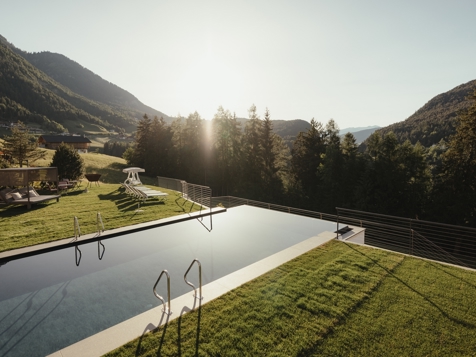











Luis Trenker – a legend
Alois Franz Trenker was born in St. Ulrich in Gröden in 1892 and has grown up bilingual – German and Ladin. Already as a student, he worked as a mountain guide and ski instructor. Later he studied architecture in Vienna, but he finished his studies only after World War I in Graz. Luis Trenker fought on the eastern front during World War I as well as in the mountain war against Italy.
Trenker, who worked as an architect in Bozen, discovered films rather coincidentally. For the filming of the film “Mountain of destiny” by Arnold Fanck, he was booked as a mountain guide. It turned out that the main character was not able to climb, and Luis Trenker took over the role on the spot.
Afterwards, he had several other roles, and from 1928, he also worked as a director himself. Is first project as a director was the silent drama film “Struggle for the Matterhorn”. Frequently, Trenker was the director, main character and screenwriter in one person for his films. From 1927, he was not allowed to work as an architect anymore due to a new law setting aside the recognition of academic qualifications made abroad in the meanwhile Italian South Tyrol. He abandoned his office, continued to work as an artist only and moved to Berlin, where he lived until 1940.
Trenker and National Socialism
As Luis Trenker’s works majorly were about the idealisation of his homeland and the mountains as well as about strong, heroic mountaineers, they were ideal to be instrumentalised by the NS regime in Germany and by the fascist regime in Italy. Luis Trenker was initially adored and sponsored by Hitler and Mussolini.
Only when he tried again and again to oppose to the pressure and artistic interference by politics and when he hesitated choosing Germany during the South Tyrolean Option*, he fell into disfavour. His projects were put off and the sponsoring was stopped. Although he entered the NSDAP in 1940, he was not able to gain the favour of the party leadership anymore. Finally, was imposed with a ban on pursuing his career. The same year, he moved to Rome, where he could still make several films.
After World War II, Luis Trenker was not able to continue his success story. From the 1950s, he again made documentaries and motion pictures. During the 1960s, he appeared in various TV programmes and worked as an actor here and there.
In 1990, he died in Bozen and was buried in St. Ulrich in the family grave.
*Option: From 1939 to 1943, the German and Ladin-speaking South Tyrolean must choose between whether to move to Germany or to stay where they lived. Here, they were exposed to Italianisation and were culturally oppressed.
7 interesting facts about Luis Trenker:
- Participation at the Olympic Games in Chamonix (last place)
- Possible relationship with Leni Riefenstahl
- Writing of novels, articles and reports, support by ghost writers
- Trenker was a marketing genius: he tried to make business with Eva Braun’s dairies
- He was married and had 4 children with his wife
- It is possible that he was the father of a child with his assistant
- The Museum Gherdeina in St. Ulrich displays a Luis Trenker collection
Celebrities
Selected accommodations in St. Ulrich in Gröden

Family-run hotel in Gröden, furnished in the traditional South Tyrolean style, excellent cuisine, MTB rental for free & much more.

- Exclusive apartments for an unforgettable holiday

Cosy apartment for 2-5 persons, family-friendly, quiet but central position, garden with loungers and small playground, ideal starting point for hikers and skiers.

Family-run hotel in a sunny location above St. Ulrich, with a homely atmosphere and fantastic panoramic view of the surrounding mountains.
